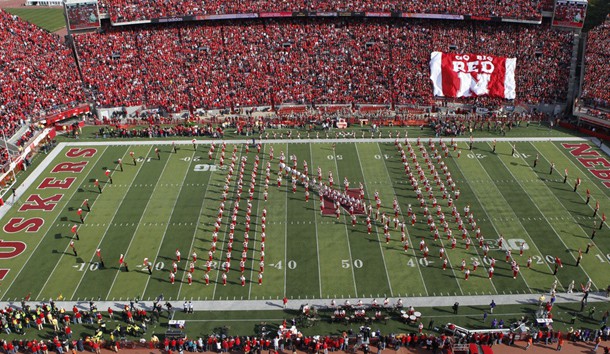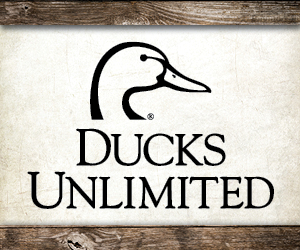
Every Nebraska home game has been sold out for 55 years … the all-time record. (USA TODAY Sports)
Tickets.
When college football fans start talking about their favorite teams or thinking about the upcoming season, that’s not the most exciting thing that comes to mind.
It’s the returning quarterback or the back-breaking schedule. It’s Lindy’s preseason national rankings or hotel reservations for away game trips. The band, the cheerleaders, the tailgate tents.
That’s what fans really want to talk about.
But, that’s not the thing that fans must talk about, the thing that has to be on the top of everybody’s list.
It’s tickets.
You can’t see the game live from a parking lot and you can’t enjoy the game day experience from a couch.
It’s been that way since the early days of college football. The first game was played in November 1869, a 6-4 win by Rutgers over the College of New Jersey (now known as Princeton). According to historical accounts, there were 50 “combatants” and “about 100 spectators” in that field in New Brunswick, N.J., with no mention made about ticket costs for those watching the game.
Now, almost 150 years later, there can be three times that many combatants, over 100,000 spectators at the stadium, and ticket costs can exceed mortgage payments, not to mention the costs for parking, hot dogs, soft drinks and shakers.
Over the decades, attendance at college games continued to increase, especially after World War II and popularity of the game has exploded in recent years.
Gigantic crowds and full stadiums are nothing new. Take Nebraska, for example. Every Cornhusker home game has been sold out for 55 consecutive seasons, the longest-running streak in the country. As pointed out by Omaha.com, the last time that there wasn’t a full house in Lincoln, John F. Kennedy was President of the United States and a gallon of milk cost 30 cents.
Despite all of the changes impacting college football during the past five-plus decades, Nebraska’s attendance has remained constant. That hasn’t been the case everywhere and there have been a lot of reasons why the landscape changed. The biggest reason has been television.
When Waynesboro State played Fordham in New York City on Sept. 30, 1939, the game was broadcast by NBC with one camera and one announcer. That first-ever televised game reached about 1,000 TV sets. Just a month later, Kansas State’s homecoming game against Nebraska was the second game televised … and the broadcast explosion was underway.
Nobody could have anticipated the difference it would make in the game. For years, televised games were restricted by the NCAA, but a 1984 court decision removed those restrictions. Television contracts evolved into an important source of revenue for universities and their athletic programs, and television networks, led by industry leader ESPN, became the primary decision makers regarding days and times when games are played.
The size of stadiums grew; athletic department budgets skyrocketed; sale of college logo products mushroomed; and in many areas, college football surpassed professional football and Major League baseball as the fan favorite.
But, in recent years, crowds at college games have decreased. In 2016, Football Bowl Subdivision games averaged only 43,106 in attendance, the sixth consecutive year of decline. It was the lowest average attendance since the 2000 season.
Some examples: Southern California averaged just 68,459 fans in the cavernous Los Angeles Coliseum, its lowest average attendance in 14 years. Crowds at Missouri home games were down 20 percent from the previous season; Minnesota’s average was down 16 percent; and 12 percent fewer fans filed into Kentucky’s Commonwealth Stadium.
There were schools where attendance was up. Some examples: The Miami Hurricanes with new head coach Mark Richt increased crowds by 23 percent. Colorado, surprise winner of the Pac-12 South Division, increased attendance by 18 percent; and Louisville, with Heisman Trophy winner Lamar Jackson, experienced a 10 percent increase. Michigan reportedly sold an astounding 90,000 season tickets for the 2017 season, including student tickets.
Still, it was another year with a decrease in overall attendance.
So, that should be good news for fans, right? Athletic department revenues are at all-time highs, and with more empty seats, the law of supply-and-demand should help lower ticket prices.
Not hardly. With revenue up and attendance down, the average cost of tickets has still continued to increase, in some cases significantly.
Why is that happening?
“They (the schools) keep increasing prices to drive revenue from the sale of season tickets, as teams benefit from the up-front money,” explained Mike Guiffre, Vice President of Sales at Ticket City, the largest privately held ticket marketplace in the world. “But, then they may end up spending more resources, including staff and marketing dollars, or offering discounts to move a handful of tickets.”
Many factors have had an impact on declining attendance and many of those involve television, directly or indirectly.
“The game day experience is evolving,” Guiffre said. “You can no longer park close to stadiums, permits are required, tailgating is much stricter. Every game in the world you can see on TV; consumers can watch 12 games, so why watch just one.”
The first Saturday games kick off by mid-morning Eastern Time and the last game often ends well after midnight. In between, fans can sit comfortably in the den, change channels from game to game, avoid the heat or rain, and never wait in a restroom line.
Game times are uncertain. Kickoff times are often not confirmed until the week of the game to accommodate television schedules. Even the day when games are played can change. Games are played on all Thursday and Friday nights, and occasionally on Tuesday night or Sunday. It’s difficult for fans to make plans in advance, especially for away game travel. And, when fans have to be at work early the next morning, the decision may be to stay at home rather than drive long distances and return in the wee hours.
Still, despite the lucrative broadcast deals, the top generated revenue source continues to be ticket sales. That also represents the greatest growth potential, especially when compared to media rights fees or corporate sponsorships.
Schools feel that they need to continue increasing revenue related to athletics. Salaries for head coaches have reached the ridiculous level. Facilities have to be upgraded and expanded to keep up with the competition. Even with the substantially increased revenues, many, if not most, programs are not making a profit.
There are things that athletic departments can consider regarding the need for increased attendance, which in turn requires increased ticket sales. They could hire, train and resource a ticket sales team. They could use traditional advertising (print, radio, television) or have billboards in prime locations. They could lower ticket prices, especially for students. Clemson has been the only big-time program that hasn’t charged students for home game tickets. When a change to that policy was suggested for the 2016 season, it met immediate student resistance, enough that the athletic department reconsidered the decision.
That does brings us to back to those ticket costs.
Face value prices for tickets to many home games for top Power 5 conference teams are triple digits. The nation’s top rivalry game, the Iron Bowl with Alabama playing this year in Jordan-Hare Stadium in Auburn in late November, has a $130 face value cost per ticket. And, that doesn’t include the preseason contribution required in order to qualify for premium seating.
The Auburn-Alabama situation is not unique. Most major college programs have a similar contribution framework for establishing seating priority and determining who is eligible to order tickets to specific games.
For those fans who don’t have high enough priority, have difficulty securing tickets that they want, or don’t want to spend that much money for a complete set of season tickets, secondary market companies, such as Ticket City, can provide valuable service. Those companies can also work with teams and athletic programs to help promote and sell available tickets.
Take the Alabama-Florida State season opener in Atlanta on Sept. 2 for example. The Crimson Tide and the Seminoles haven’t played each other since 2007. Alabama is first in every preseason ranking including Lindy’s, while Florida State is in every Top 5 (ranked No. 4 by Lindy’s). The new Mercedes-Benz Stadium in Atlanta seats just 75,000 fans, which is smaller than the stadiums in Tuscaloosa or Tallahassee, with seating divided equally between the teams. So, it’s the perfect storm against the average fan … two highly ranked teams that seldom meet on the field, a smaller stadium with fewer available seats per team, enthusiastic fans bases both within easy driving distance of the field.
“That game is easily our highest demand and highest price ticket,” said Shannon McKinley, Director of Public Relations and Communications for Ticket City. “The median price is over $806.”
The Bama-FSU ticket is one of the four highest priced tickets of the early season through Ticket City. The others are Georgia at Notre Dame ($627), Oklahoma at Ohio State ($424) and Auburn at Clemson ($293). All except Notre Dame are ranked among the preseason Top 12 by Lindy’s.
Prices can change quickly, according to McKinley. Within a 24-hour period during the past week, the median cost for a ticket to the Ohio State game at Nebraska (Oct. 14) increased by $244, an increase of $46 overnight.
The role for companies like Ticket City becomes even more important when it comes to early season non-conference match-ups, postseason bowl games and playoff games. These are games where it is often necessary to move tickets quickly and efficiently.
“One challenge in the secondary market is that our prices can fluctuate due to a number of factors,” Guiffre said. “A good example is the College Football Playoff. When the game will be played, where it is played, who is playing, how far the fan base will need to travel.
“The Playoff Committee chooses the teams just a few weeks prior to the Semifinal games. You usually have no idea until Selection Sunday who is going to which stadium. For some fans, this is not a large enough turnaround. In addition, other fans, who may be closer to the National Championship Game may hold off to spend their pennies on the bigger game.”
Secondary market companies have staffs with ticket sales and marketing experience. According to McKinley, ticket industry technology has improved the safety of tickets, increased emphasis on identifying counterfeit tickets, and made fraud protection better.
“Our industry spends millions of dollars in marketing,” Guiffre said. “Individual college teams can’t afford to do what we can do.”
So, what does the future hold for the ticket marketplace?
An increasing number of college and universities are adding football programs. Four programs join the list of teams this year … Dean College (Franklin, Mass.), St. Andrews University (Laurinburg, N.C.), Texas Wesleyan University (Fort Worth, Tex.), which has not had a program since before World War II, and UAB (Birmingham, Ala.), which returns to the field two years after the program was terminated, then resurrected.
This raises the number of schools with football teams to an all-time high 777, including all NCAA divisions, the NAIA and independents, with 668 NCAA programs having teams in the 2016 season. That compares to just 484 teams 40 seasons ago. Six more programs are scheduled to start teams for the 2018 season, then two more are confirmed to join in 2019.
More teams means more fans, more games and more tickets needed.
And, technology continues to improve, while the purchasing preferences of buyers continue to change.
“More and more fans prefer PDF or digital tickets rather than hard stock tickets,” said McKinley. “They are quicker, more efficient and easier to keep up with for fans. There will still be some people that want to keep a hard ticket as a momento or souvenir, but otherwise, I think this will continue.”
The importance of tickets will continue, too, no matter what happens in college football or the ticket industry.
You still won’t be able to see the game live from a parking lot or enjoy the game day experience from a couch.
You’ll still need a ticket.


